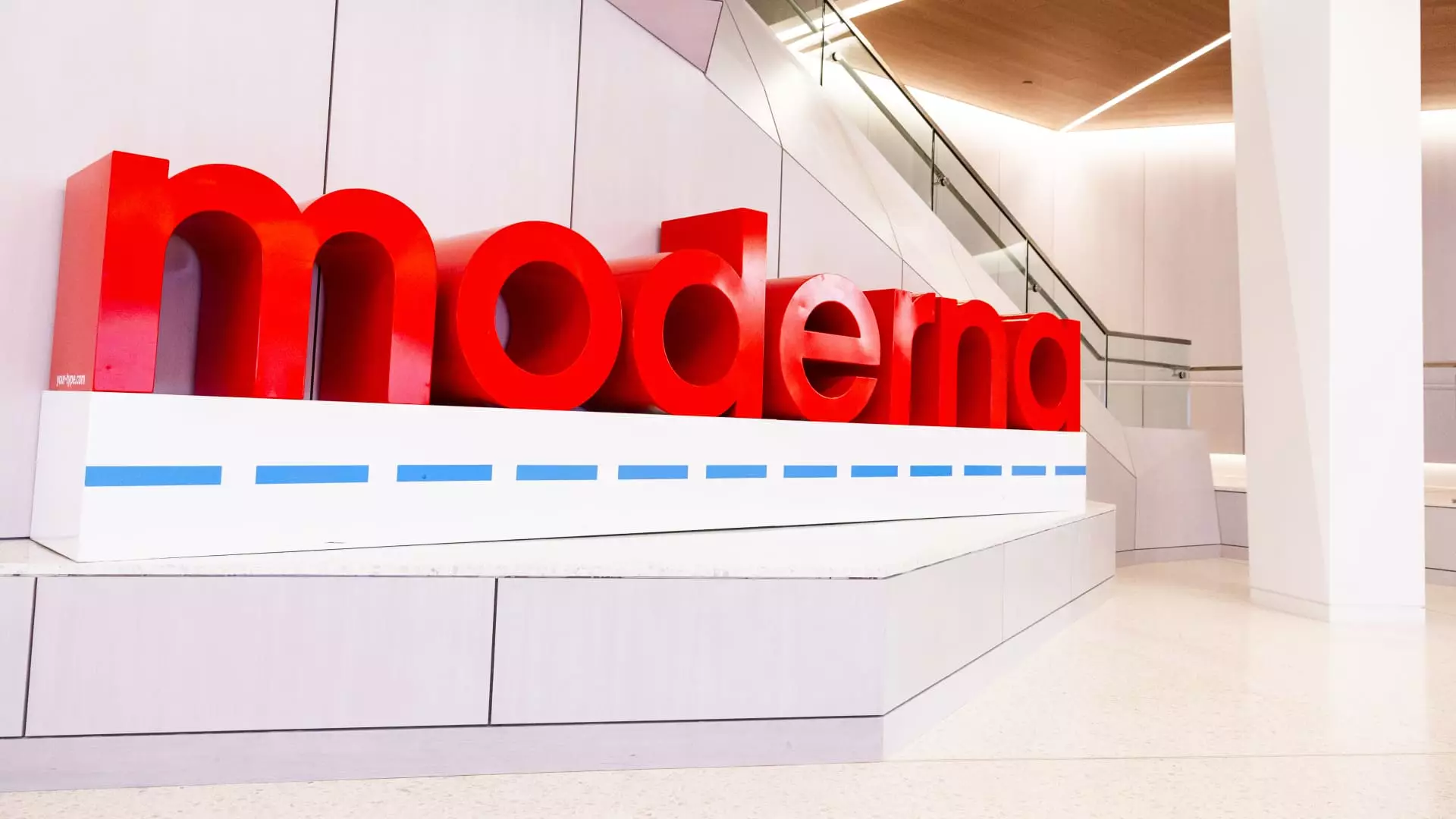As the biotech world continues to grapple with the aftermath of the pandemic, Moderna’s recent fourth-quarter report reflects a cocktail of opportunities and challenges. On one hand, the company’s revenue for the period exceeded expectations, but on the other, its losses were steeper than anticipated. This juxtaposition paints a picture of a company undergoing significant transformations as it seeks to adapt beyond its Covid-19 vaccine sales.
For the fourth quarter ending December 31, 2024, Moderna reported a net loss of $1.12 billion, equating to $2.91 per share. This comes as a stark contrast to the same period last year, where they recorded a net income of $217 million (55 cents per share). This staggering shift showcases the financial growing pains Moderna is experiencing as the once-booming demand for Covid vaccinations diminishes. Analysts had hoped for a loss of $2.68 per share, making the actual outcome a significant miss. Interestingly, even though the revenue of $966 million surpassed the anticipated $942.8 million, it is worth noting that this figure is drastically lower than the nearly $2.8 billion achieved during the same quarter the previous year.
In breaking down the revenue, it becomes clear that the Covid vaccine remains the cornerstone of Moderna’s income. However, the $923 million generated from the vaccine represents a staggering 66% drop from the previous year, primarily driven by declining international sales. The company attributes this dip to a strategic phase-out of advance purchase agreements with various countries, effectively highlighting the unpredictable nature of global vaccine demand.
Cost-Cutting Measures and Future Projections
In an effort to navigate a rapidly changing landscape, Moderna has enacted significant cost-reduction measures, slashing expenses by 27% year-over-year. The company’s CFO, Jamey Mock, emphasizes the importance of this strategic pivot, indicating further cost reductions of $1 billion are anticipated by the end of 2025. This commitment is reflective of a broader trend in the biotech sector, where companies must remain agile to fend off increasing competition and fluctuating demands.
Moderna adjusted its full-year 2025 product sales guidance to a range of $1.5 billion to $2.5 billion, with the majority of this income expected in the latter half of the year. The company maintains that $200 million of that total is likely to be generated in the first half, largely constrained by the changing demand for respiratory-related products which typically peaks in winter. Such measures highlight the necessity for Moderna to maintain a careful balance between cost management and future growth.
Despite challenges, Moderna remains resolute in expanding its product offerings beyond Covid. During the fourth quarter, the company submitted three new mRNA products for regulatory approval. This includes its next-generation Covid shot, a combination vaccine for flu and Covid, and an RSV vaccine aimed at high-risk adults aged 18 to 59. With regulatory decisions expected in the coming months, Moderna’s future product pipeline appears promising, albeit laden with uncertainty.
The company’s recent foray into non-Covid vaccines, such as its RSV product that brought in $15 million, illustrates a diversifying strategy that aims to cushion the company from the prevailing headwinds it faces in the wake of declining Covid vaccine sales. This move to harness their innovative mRNA technology for multiple applications signifies a landmark shift within the organization.
Looking at the broader market context, Moderna’s challenges cannot be viewed in isolation. The competitive landscape has intensified, with rivals emerging in the Covid market, alongside shifts in public health policy and vaccination strategies. The recent plummet in stock prices—over 20% for the year—serves as a stark reminder of the pressures facing biotech firms in today’s market. The company’s admission that its lowered sales projection is largely influenced by competition and timing issues indicates a need for innovative strategies moving forward.
In an era marked by shifting consumer behavior, regulatory scrutiny, and an evolving healthcare landscape, Moderna must harness its scientific capabilities and agile business practices to navigate the current storm. Future successes will hinge not only on effective cost management and market responsiveness but also on successfully launching new products that capture market interest.
While Moderna’s current financial results paint a sobering picture, they also serve as a pivotal moment of reflection. The company is at a crossroads, with the ability to pivot, innovate, and survive grounded in its adaptability and willingness to learn from the changing dynamics of the healthcare industry. The next few quarters will be critically telling in determining whether Moderna can pivot successfully and harness its groundbreaking technologies for sustained growth.

